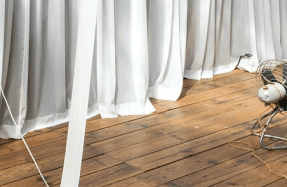GIVING VOICE, FORMING BODY


In late August 2017, Katharina Amman, head of the Swiss Institute for Art Research (SIK-ISEA) and Christina Vegh, director of the Kestner Gesellschaft, Hanover, gathered in Zurich for a public dialogue with artists Teresa Hubbard and Alexander Birchler at Villa Bleuler, the headquarters of SIK-ISEA. The event explored Hubbard and Birchler’s contribution to the Swiss Pavilion at the 57th Venice Biennale, cited by audiences and critics as one of the most meaningful, outstanding works in the Biennale. Continuing the initial dialogue, the artists and Vegh further explored ideas about feminism, storytelling and re-framing history in the following conversation.
Christina Végh: I would like to start with Flora (2017), the film installation you developed for the Swiss Pavilion at the 57th Venice Biennale, in which you provide a multilayered, kaleidoscopic view of artist Flora Mayo, previously only mentioned in passing in studies on her lover Alberto Giacometti. Various narrative lines emanate from the work: the story of an American woman living in Paris, passionate about becoming an artist; a romance between two young people; an exploration of the relationship between a mother and son; a discussion on storytelling itself, and how our identities, experiences and opportunities in life are affected by the narratives that we tell or are told to us; and finally a critique on art history and historiography in general, making it visible how women are often neglected in research. After all, you “simply” detected some mistakes of former art historians and corrected them!
Your work is providing new critical insights into the art historical domain, but obviously you work from the standpoint of artists rather than art historians. How does your “artistic research” differ, and how do you view this term within your own practice? Can you elaborate on the issues connected to definitions of “research,” and describe the working modes you are interested in?
Rather than thinking of “correcting,” we think about “re-framing.” We start from a place of questions and these questions lead us to other questions as part of the journey that’s fueled by our interest in storytelling and strategic digression. We allow ourselves to get lost and we allow for a place of unknowing. We think of our work as action-based research, propelled by
You’re reading a preview, subscribe to read more.
Start your free 30 days





